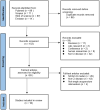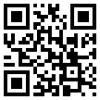Understanding the Relationship Between Vascular Smooth Muscle Cell Function and the Efficacy of Acupuncture in Treating Cerebral Ischemic Stroke: A Preclinical Meta-Analysis and Systematic Review
- PMID: 38746535
- PMCID: PMC11093122
- DOI: 10.2147/JPR.S449499
Understanding the Relationship Between Vascular Smooth Muscle Cell Function and the Efficacy of Acupuncture in Treating Cerebral Ischemic Stroke: A Preclinical Meta-Analysis and Systematic Review
Abstract
Background: Cerebral blood flow and vascular structures serve as the fundamental components of brain metabolism and circulation. Acupuncture, an alternative and complementary medical approach, has demonstrated efficacy in treating cerebral ischemic stroke (CIS). Nevertheless, the mechanisms underlying the impact of acupuncture on vascular smooth muscle cell (VSMC) function remain uncertain. The objective of this systematic review and meta-analysis is to assess the alterations in VSMC function following acupuncture stimulation in CIS models.
Methods: The databases PubMed, Web of Science, SCOPUS, and EMBASE were queried until November 2022 using a predetermined search strategy. The FORMAT BY SYRCLE guidelines were adhered to, and the risk of bias of the included studies was evaluated using the Risk of Bias tool developed by the Systematic Review Centre for Laboratory Animal Experimentation. The random-effects model was employed to estimate the standardized mean difference (SMD).
Results: Eighteen articles are included in this review. Acupuncture showed significant positive effects on the region cerebral blood flow (SMD=8.15 [95% CI, 4.52 to 11.78]) and neurological deficiency (SMD=-3.75 [95% CI, -5.54 to -1.97]). Descriptive analysis showed a probable mechanism of acupuncture stimulation in CIS rats related to VSMC function. Limitations and publication bias were presented in the studies.
Conclusion: In this systematic review and meta-analysis, our findings indicate that acupuncture stimulation has the potential to improve regional cerebral blood flow and alleviate neurological deficits, possibly by regulating VSMC function. However, it is important to exercise caution when interpreting these results due to the limitations of animal experimental design and methodological quality.
Keywords: acupuncture therapy; cerebral ischemic stroke; systematic review; vascular smooth muscle cell; vasomotor.
© 2024 Cao et al.
Conflict of interest statement
The authors declare that the research was conducted in the absence of any commercial or financial relationships that could be construed as a potential conflict of interest.
Figures




Similar articles
-
Acupuncture for autophagy in animal models of middle cerebral artery occlusion: A systematic review and meta-analysis protocol.PLoS One. 2023 Feb 22;18(2):e0281956. doi: 10.1371/journal.pone.0281956. eCollection 2023. PLoS One. 2023. PMID: 36812222 Free PMC article.
-
Can acupuncture reverse oxidative stress and neuroinflammatory damage in animal models of vascular dementia?: A preclinical systematic review and meta-analysis.Medicine (Baltimore). 2023 Jun 9;102(23):e33989. doi: 10.1097/MD.0000000000033989. Medicine (Baltimore). 2023. PMID: 37335660 Free PMC article.
-
Fire Acupuncture versus conventional acupuncture to treat spasticity after stroke: A systematic review and meta-analysis.PLoS One. 2021 Apr 9;16(4):e0249313. doi: 10.1371/journal.pone.0249313. eCollection 2021. PLoS One. 2021. PMID: 33836008 Free PMC article.
-
Efficacy and mechanism of acupuncture in animal models of depressive-like behaviors: a systematic review and meta-analysis.Front Neurosci. 2024 Feb 15;18:1330594. doi: 10.3389/fnins.2024.1330594. eCollection 2024. Front Neurosci. 2024. PMID: 38426019 Free PMC article.
-
Mesenchymal stem cell-derived extracellular vesicles therapy in traumatic central nervous system diseases: a systematic review and meta-analysis.Neural Regen Res. 2023 Nov;18(11):2406-2412. doi: 10.4103/1673-5374.371376. Neural Regen Res. 2023. PMID: 37282470 Free PMC article.
Cited by
-
Acupuncture as adjunctive therapy for acute cerebral infarction: a randomized clinical trial.Front Neurol. 2025 Apr 11;16:1509204. doi: 10.3389/fneur.2025.1509204. eCollection 2025. Front Neurol. 2025. PMID: 40291847 Free PMC article.
References
-
- Guzik A, Bushnell C. Stroke epidemiology and risk factor management. Continuum. 2017;23(1):15–39. - PubMed
-
- Tolonen H, Mähönen M, Asplund K, et al. Do trends in population levels of blood pressure and other cardiovascular risk factors explain trends in stroke event rates? Comparisons of 15 populations in 9 countries within the WHO MONICA stroke project. Stroke. 2002;33(10):2367–2375. doi:10.1161/01.STR.0000033131.27936.7F - DOI - PubMed
-
- Emberson J, Lees KR, Lyden P, et al. Effect of treatment delay, age, and stroke severity on the effects of intravenous thrombolysis with alteplase for acute ischaemic stroke: a meta-analysis of individual patient data from randomised trials. Lancet. 2014;384(9958):1929–1935. doi:10.1016/S0140-6736(14)60584-5 - DOI - PMC - PubMed
Publication types
LinkOut - more resources
Full Text Sources

